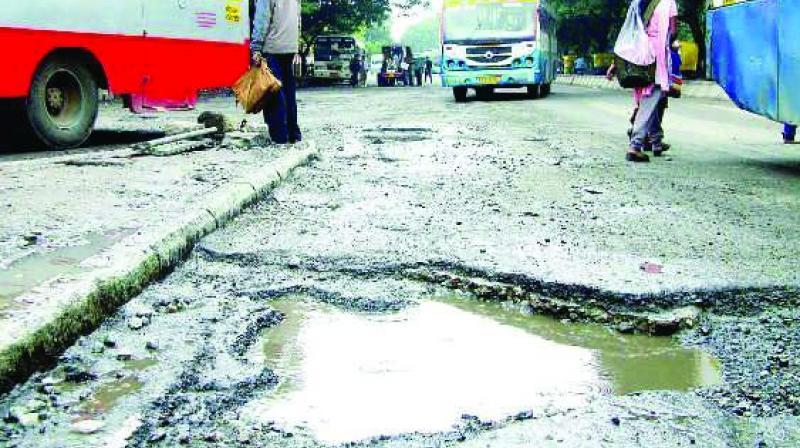Road repair: Sunflower oil capsules to fix potholes
The sunflower oil can flow into such gaps, combine with the bitumen, and recombine the disjoint ends before the gaps turn into large potholes.

Hyderabad: English researchers have developed a technique which may prove to be an effective solution for the dismal state of Hyderabad’s roads.
The highways department of England has launched a research project in collaboration with the University of Nottingham to study the use of sunflower oil capsules to fix fissures in asphalt roads.
This technique, which has been developed by the researchers of the University of Nottingham, seeks to make road-mix thinner in consistency to fill up small gaps in the road more easily. The sunflower oil can flow into such gaps, combine with the bitumen, and recombine the disjoint ends before the gaps turn into large potholes.
This technique may prove to be an effective solution for the Greater Hyderabad Municipal Corporation (GHMC). Officials of the GHMC say that the repair of damaged roads is expected to cost the GHMC Rs 78 crore. If the technique being studied proves to be effective, the cost of road repairs may reduce considerably. One litre of sunflower oil cost about Rs 85.
Road engineers from the University of Nottingham say that a bituminous road is usually made up of four layers – gravel, a sub-base, the main base, and finally a layer of bitumen. New cracks usually develop in the asphalt layer. If sunflower oil is poured into the cracks, the loose bitumen can combine with it and seep in, thus filling up the gaps.
In the first part of the study, Highways England, which is funding the research, will add 18.5 litres of sunflower oil to five tonnes of asphalt along a five-yard stretch of road and examine the outcome.
Experts, however, remain sceptical about the validity of the results. N.V. Ramana, a senior professor of Civil Engineering at JNTU, says, “The amount of technical data that exist is too small to know whether this is applicable on a large scale.”
At present, the GHMC fixes gaps in the road by filling them with a bitumen mix. Such remedial measures are only implemented when the potholes reach an unmanageable size and level. This new technique aims to nip the problem in the bud. “It is necessary for the oil to combine with the bitumen particles and form bonds. This can only be achieved when the correct quantity of oil is used, according to the amount of bitumen,” says Mr Ramana.
Experts also say that minor tweaks to the GHMC’s current approach can make it more effective. “The GHMC tends to localise relaying of roads to the location of potholes. However, what they must do instead, is cut the entire stretch out and relay it so that the bonds remain strong,” says Mr Ramana.

